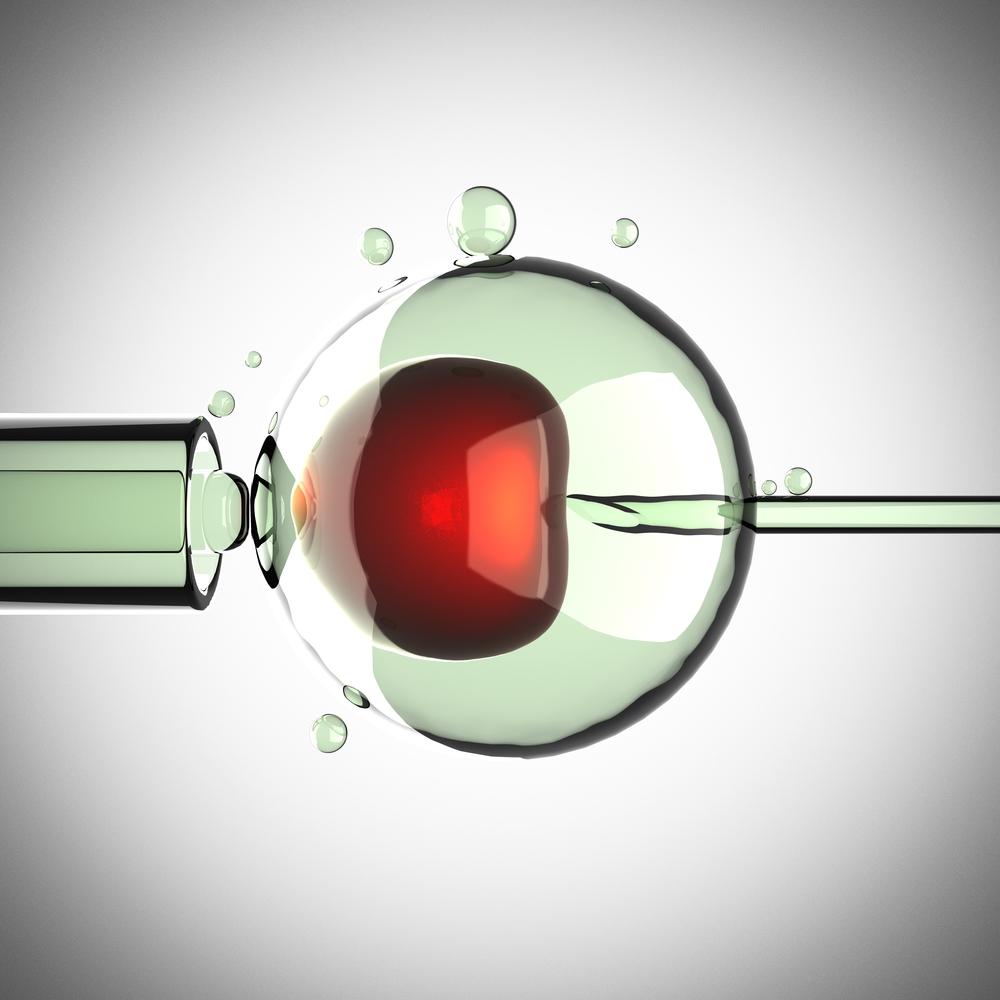Three Years After Stem Cell Transplant Therapy Most MS Patient Subjects Still In Remission
Written by |

A new study published online before print in the journal JAMA Neurology reports that three years on, most members of a small subject group of patients with active relapsing-remitting (RR) multiple sclerosis (MS) who had received an experimental high-dose immunosuppressive therapy (HDIT) followed by a transplant of their own hematopoietic stem cells, remain in sustained remission with lasting neurological function improvement.
The Open Source research update, entitled “High-Dose Immunosuppressive Therapy and Autologous Hematopoietic Cell Transplantation for Relapsing-Remitting Multiple Sclerosis (HALT-MS) – A 3-Year Interim Report,” (JAMA Neurol. Published online December 29, 2014; DOI: 10.1001/jamaneurol.2014.378) is coauthored by Richard A. Nash, MD, George J. Hutton, MD; Michael K. Racke, MD; Uday Popat, MD; Steven M. Devine, MD; Linda M. Griffith, MD, PhD; Paolo A. Muraro, MD, PhD; Harry Openshaw, MD; Peter H. Sayre, MD, PhD9,10; Olaf Stüve, MD, PhD11,12,13; Douglas L. Arnold, MD; Meagan E. Spychala, DrPH; Kaitlyn C. McConville, MS Kristina M. Harris, PhD; Deborah Phippard, PhD; George E. Georges, MD, Annette Wundes, MD; George H. Kraft, MD, MS, and James D. Bowen, MD, representing 22 different medical research institutions in the U.S..Canada, and the U.K.
In an article study, lead author Richard A. Nash, M.D. of the Colorado Blood Cancer Institute at Presbyterian/St. Luke’s Medical Center, Denver, and coauthors report on the safety, efficacy and sustainability of MS disease stabilization though three years after the procedures.
The coauthors observe that most patients with relapsing-remitting multiple sclerosis who are treated with approved disease-modifying therapies will experience breakthrough disease and accumulate neurologic disability. However RRMS patient participants in a clinical trial who received high-dose immunosuppressive therapy (HDIT) with autologous hematopoietic cell transplant (HCT) may, by contrast, experience sustained remissions in cases of MS treated early.
The update published this week in JAMA Neurology evaluates the safety, efficacy, and durability of MS disease stabilization achieved in the three years after the HDIT/HCT therapy was administered to a group of 25 participants, 24 of whom ultimately received the experimental treatment.
 Hematopoietic Cell Transplantation for Relapsing-Remitting Multiple Sclerosis (HALT-MS) is an ongoing, multicenter, single-arm, phase 2 clinical trial of HDIT/HCT for patients with RRMS who have experienced relapses involving neurologic function loss during treatment with other disease-modifying therapies within 18 months prior to enrolment. Participants are to be evaluated through five years after receiving the HCT treatment, and this report is a scheduled three-year interim analysis of the trial in which autologous peripheral blood stem cell grafts were CD34+ selected, after which participants received high-dose treatment with carmustine, etoposide, cytarabine, and melphalan as well as rabbit antithymocyte globulin before receiving autologous HCT.
Hematopoietic Cell Transplantation for Relapsing-Remitting Multiple Sclerosis (HALT-MS) is an ongoing, multicenter, single-arm, phase 2 clinical trial of HDIT/HCT for patients with RRMS who have experienced relapses involving neurologic function loss during treatment with other disease-modifying therapies within 18 months prior to enrolment. Participants are to be evaluated through five years after receiving the HCT treatment, and this report is a scheduled three-year interim analysis of the trial in which autologous peripheral blood stem cell grafts were CD34+ selected, after which participants received high-dose treatment with carmustine, etoposide, cytarabine, and melphalan as well as rabbit antithymocyte globulin before receiving autologous HCT.
The main end point objective of HALT-MS is “event-free survival,” which is defined as survival without death or disease activity from any of specified outcomes: 1) confirmed loss of neurologic function, 2) clinical relapse, or 3) observation of new lesions using magnetic resonance imaging (MRI). Any toxic effects associated with the experimental treatment are to be reported using National Cancer Institute Common Terminology Criteria for Adverse Events. The median follow-up interval was 186 weeks, and overall event-free survival averaged 78.4% (ranging 90% CI, 60.1%-89.0%) at the three year mark. Progression-free survival and clinical relapse-free survival were 90.9 percent and 86.3 percent, respectively, at three years. The researchers report that adverse events observed were consistent with what had been expected with HDIT/HCT, and no acute treatment-related neurologic adverse events were observed. Improvement was observed in subjects’ neurologic disability, quality-of-life, and functional scores.
The scientists conclude that at the three-year mark in the trial, HDIT/HCT without and maintenance therapy was observed to be effective at inducing sustained remission of active RRMS and also associated with neurologic function improvements, and only a few serious early complications or unexpected adverse events.
The JAMA Neurology report’s coauthors note that researchers have been investigating autologous hematopoietic cell transplant (HCT) therapy for more than 20 years — the hoped-for objective being removal of disease-inducing immune cells and an immune system reset. However, many patients with advanced disabilities and progressive forms of MS who participated in early clinical trials of high-dose immunosuppressive therapy (HDIT)/HCT continued to lose neurologic function, consistent with the noninflammatory factors and progressive neurodegeneration associated with these stages of the disease. However in 15 years of monitoring, patients with active central nervous system inflammation before HDIT/HCT enjoyed significantly better outcome compared with those without active inflammation before HDIT/HCT, indicating that the therapy may achieve greater success if received in earlier MS inflammatory stages.
The researchers hypothesize that inflammation control applied in the earlier RRMS stages may confer prolonged remission and even potential for reversal of neurologic dysfunction. To that end, the Hematopoietic Cell Transplantation for Relapsing-Remitting Multiple Sclerosis (HALT-MS) study is investigating the effectiveness of early HDIT/HCT intervention in RRMS patients with breakthrough disease. However, they also note that because HDIT/HCT is also associated with significant risks, the treatment would have to be proved highly effective in order for it to be considered a reasonable alternative to non-HCT MS therapies. The report observes that in the HALT-MS study of subjects with RRMS, event-free survival in with was estimated to be 82.8% at two years and 78.4% at three years subsequent to the HCT treatment. The study coauthors caution that comparisons across clinical trials can be problematic, but note that in another study of patients who received natalizumab treatment or a placebo, only 37% and 7%, respectively, remained free from both clinical and MRI-documented disease activity after two years.
[adrotate group=”4″]
Moreover, in the HALT-MS study, improvement was observed from baseline in the MSFC score and neurologic function (EDSS score) in contrast to observations for interferon therapy, and since continued breakthrough disease activity associated with currently approved non-HCT treatments indicates poor prognosis, and may justify the risks associated with administration of a more intensive approach that may improve long-term outcome, and consequently represent a potential therapeutic option particularly for patients with MS in whom conventional immunotherapy fails, as well as for other severe immune-mediated diseases of the central nervous system.
The scientists report that most adverse events (AEs) observed so far in the HALT-MS study have been hematologic or gastrointestinal, and are both anticipated and reversible after high-dose immunochemotherapy, and that no early treatment-related mortality or organ failure has been observed.
The researchers say longer follow-up will be needed to determine durability of the response, and careful comparison of results of this and other ongoing investigations will be needed in order to identify the most beneficial approaches for high-dose immunosuppressive therapies for MS, and plan more clinical studies.
In a related JAMA Neurology editorial entitled “Moving Targets for Stem Cell Transplantation for Patients with MS” (JAMA Neurology, published online December 29, 2014; DOI: 10.1001/jamaneurol.2014.3831), Dr. M. Mateo Paz Soldán, MD, PhD of the University of Utah Department of Neurology at Salt Lake City,  and Dr. Brian G. Weinshenker, MD of the Mayo Clinic Department of Neurology at Rochester, Minnesota, observe that stem cell transplant therapy for patients with multiple sclerosis has been of great interest to scientists, physicians, and patients, the latter whom they say frequently enquire about the status of stem cell therapy during annual MS check-up visits, usually as a parting query. The authors note that most patients have a hazy concept of what stem cell therapy is, partly derived from a popular perception that stem cell therapy is regenerative, even though actual therapies that promote regeneration of lost myelin and axons are almost completely absent from current treatments administered by neurologists.
and Dr. Brian G. Weinshenker, MD of the Mayo Clinic Department of Neurology at Rochester, Minnesota, observe that stem cell transplant therapy for patients with multiple sclerosis has been of great interest to scientists, physicians, and patients, the latter whom they say frequently enquire about the status of stem cell therapy during annual MS check-up visits, usually as a parting query. The authors note that most patients have a hazy concept of what stem cell therapy is, partly derived from a popular perception that stem cell therapy is regenerative, even though actual therapies that promote regeneration of lost myelin and axons are almost completely absent from current treatments administered by neurologists.
Drs. Soldán and Weinshenker note that the JAMA Neurology study as well as another phase 2 single-arm study leave little doubt that high-dose immunotherapy is able to substantially suppress inflammatory disease activity in patients with MS who have active disease in the short term and provide some evidence of long-term MS suppression. Additionally, lessons have been learned about how to manage and reduce treatment-related morbidity and mortality, although deaths have occurred and aggressive therapeutic regimens have occasionally resulted in development of lymphomas associated with Epstein-Barr virus, and the jury is still out regarding the appropriateness and indication of HCT for MS, the authors conclude.
Sources:
JAMA Neurology
Image Credits:
Colorado Blood Cancer Institute
Mayo Clinic





